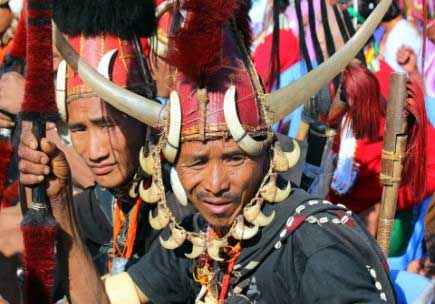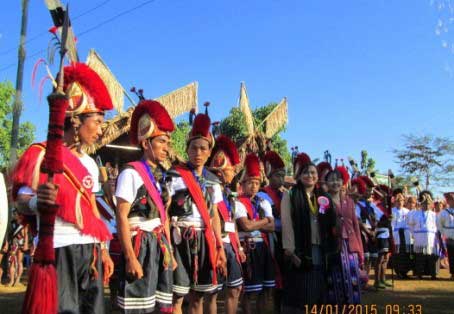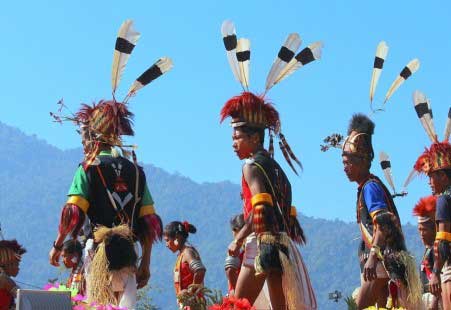 |
 |
 |
The Naga people are an ethnic group conglomerating of several tribes native to the North Eastern part of India and north-western Myanmar (Burma), Sagaing Region. The tribes in Myanmar have unique cultures and traditions, and form from the ethnic group in the Indian state of Nagaland, with significant population in Manipur, Arunachal Pradesh and in Assam. Their land is recognized as Naga self-administrative area and very famous their festival is always held alternatively at Nanyun, Layshe and Lahae towns in hilly Sagaing Region in every January.
The Naga speak various distinct Tibeto-Burman languages. In addition to it, the Naga have developed Nagamese Creole, which they use between various indigenous communities and villages, which each have their own dialects. Naga languages can be classified into Western, Central and Eastern Naga groups. The diversity of languages and traditions of the Nagas happen the multiple cultural absorptions that occurred during their successive migrations. As of 2012, the state of Nagaland officially 16 Naga tribes are living. Moreover, some other Naga tribes are living in the contiguous adjoining states of Manipur, Assam, and Arunachal Pradesh, India and across the border in Myanmar. According to legend, before settling in the land, these groups moved over vast zones, and in the process, some clans were endeavored by stronger tribes. They have a strong warrior tradition. Their villages are sited on hilltops and until the later part of the 19th century, they made frequent armed raids to villages on the plains below.
The Naga tribes live by headhunting of animals and they regard someone who killed a lot of wild animals and owned heads of one as the courageous man and become head of villages. They like wearing skin, horns of animals and especially the men's clothing is very distinctive: conical red headgear is decorated with wild-boar canine teeth and white-black hornbill feathers. Their weapons are primarily a spear, with the shaft decorated with red-black hair, and the machete (dah), with broad blade and long handle. However, Nagas today have culturally much modernized and traditional dresses are mostly used during their traditional festivals.

